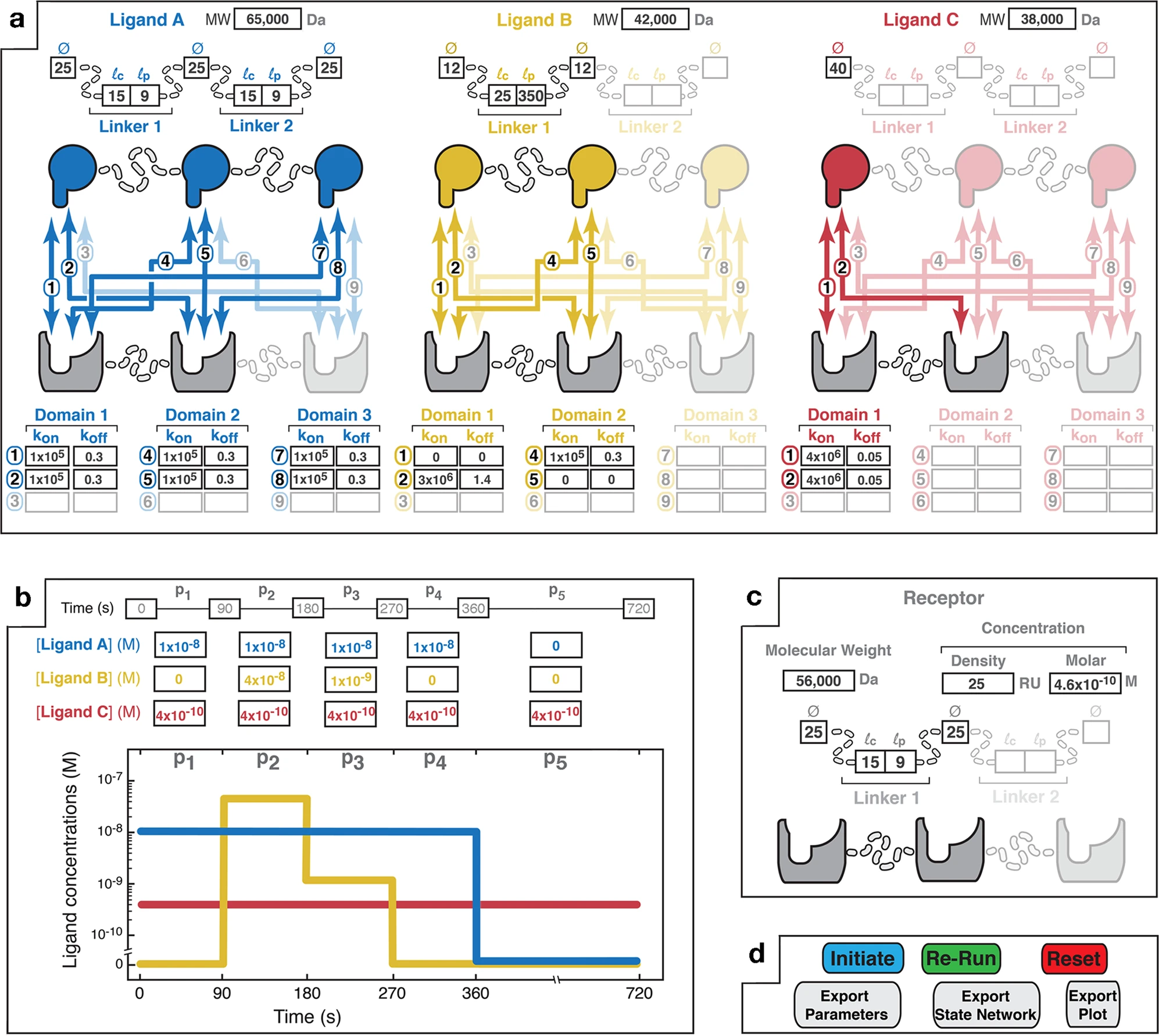MVsim is a new application suite that enables the quantification, design, and mechanistic evaluation of multivalent binding interactions. It can be used to simulate both monospecific and multispecific multivalent ligand-receptor interactions accurately, having potential applications for protein engineering, molecular and cellular analysis, as well as drug design.
The University of Minnesota Twin Cities biomedical engineers have developed an application called MVsim that can simulate complex molecular interactions. This will allow researchers to design better treatments for diseases like cancer and COVID-19. The app is freely available to other researchers on GitHub.
It has long been known that multiple ligands bind to the same target, resulting in complex and time-varying biological responses. However, to date, there has been no software available to simulate multivalent receptor-ligand interactions.
What is MVsim?
Have you ever wondered how the drugs you take affect the target receptors? What are those receptors, and how do they work? How different is one drug from another? This is where MVsim comes in. MVsim is a software package that makes it easy to simulate and analyze multivalent ligand-receptor interactions.
Multivalency refers to the ability of a single molecule to bind multiple receptors or other molecules simultaneously. This property has important implications in drug design and development, especially for targeting diseases such as cancer, where multiple receptor types are involved. MVsim is designed to model multivalent interactions between cell surface receptors and ligands. The program provides a framework for simulating and analyzing these interactions.
The program has been used to simulate the binding of multiple ligands to a target receptor as well as the dynamics of two interacting receptors. The project has also developed a novel methodology for simulating multivalent ligand-receptor interactions that can be used to study many different biological processes.
The paper builds on a study published in 2019 by the researchers to simulate even more complex molecular interactions. The researchers also made the application user-friendly for non-experts and used their findings to shed light on how the SARS-CoV-2 virus infects the body.
The simulator is capable of predicting the strength, speed, and selectivity of multivalent interactions, which involve molecules with multiple binding sites and can be used to develop disease-fighting drugs.
Many cancer drugs bind not only to tumor cells but also to cells they aren’t supposed to target, resulting in unwanted side effects for the patient.
Using MVsim to optimize the specificity of multivalent interactions, researchers can design drugs that more specifically target tumor cells while minimizing binding to other cells in the body.
According to Casim Sarkar, senior author of the paper and a professor in the U of M Department of Biomedical Engineering, multivalent drugs can target specific cells in ways that standard, monovalent drugs cannot, but their design has many variables to consider, and most of the research in the field to date has been implemented through experimental trial and error.
The SARS-CoV-2 virus is another example. Scientists know that the virus is evolving to infect our cells better and evade our immune systems, but the molecular mechanisms by which the virus accomplishes this remains unknown. The researchers were able to investigate how the virus’s spike protein switches between a cell-infecting and an immune-evading state using their MVsim technology.
MVsim provides a user-friendly graphical interface that makes it easy to investigate the relationships between configurational dynamics, cooperativity, effective concentration, and competitive binding. This approach is useful for understanding the behavior of complex systems, such as those involving intramolecular switches or conformationally regulated multi-component assemblies.
The researchers have already identified potential strategies for limiting the infectivity of current and future SARS-CoV-2 variants, which they intend to test soon.
MVsim is a versatile tool that can be used to investigate a variety of important biological questions and biomedical problems involving multi-molecular interactions.
Story Source: Paper Reference | Article Reference | MVsim, freely available on GitHub
Learn More:
Top Bioinformatics Books ↗
Learn more to get deeper insights into the field of bioinformatics.
Top Free Online Bioinformatics Courses ↗
Freely available courses to learn each and every aspect of bioinformatics.
Latest Bioinformatics Breakthroughs ↗
Stay updated with the latest discoveries in the field of bioinformatics.
Dr. Tamanna Anwar is a Scientist and Co-founder of the Centre of Bioinformatics Research and Technology (CBIRT). She is a passionate bioinformatics scientist and a visionary entrepreneur. Dr. Tamanna has worked as a Young Scientist at Jawaharlal Nehru University, New Delhi. She has also worked as a Postdoctoral Fellow at the University of Saskatchewan, Canada. She has several scientific research publications in high-impact research journals. Her latest endeavor is the development of a platform that acts as a one-stop solution for all bioinformatics related information as well as developing a bioinformatics news portal to report cutting-edge bioinformatics breakthroughs.






